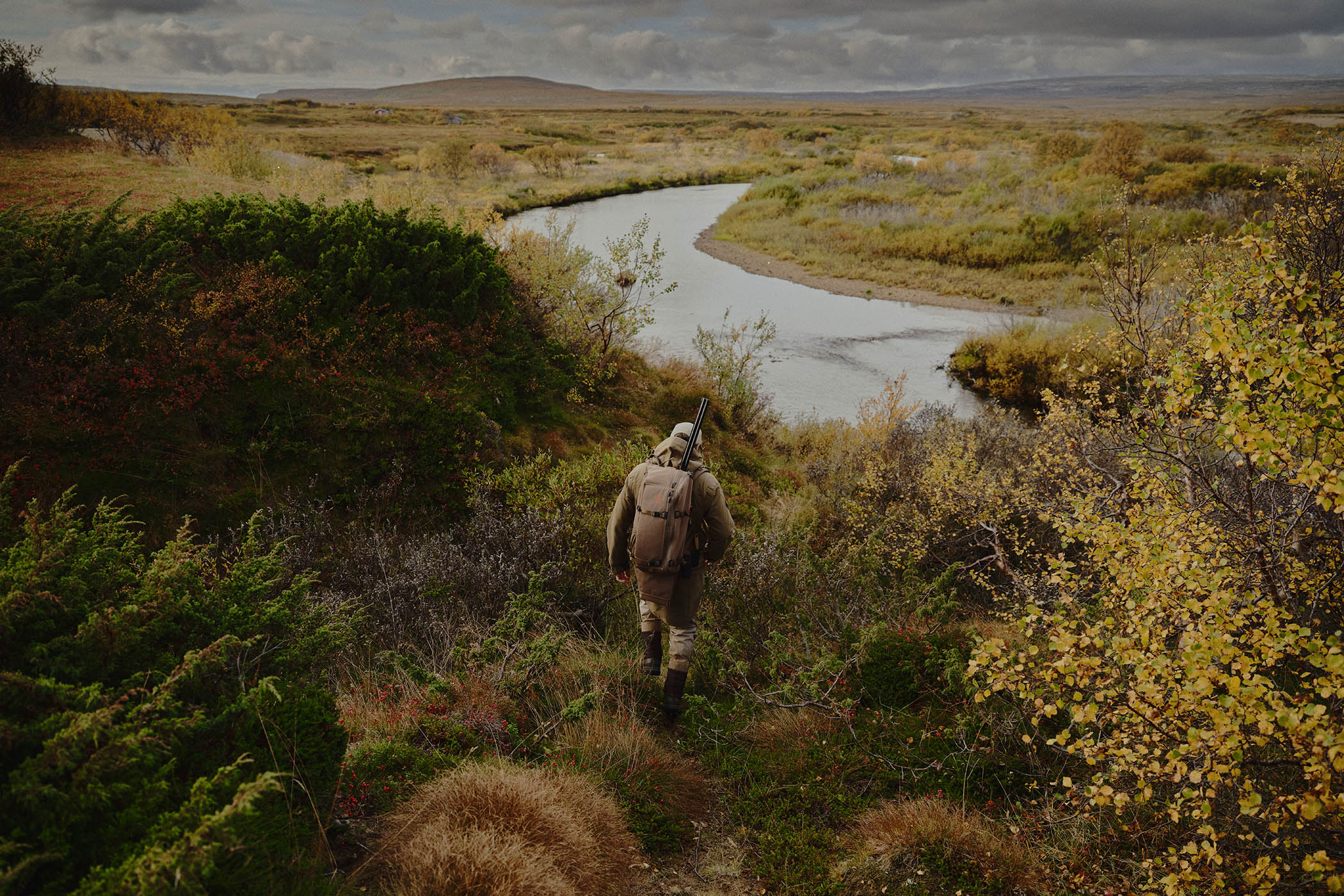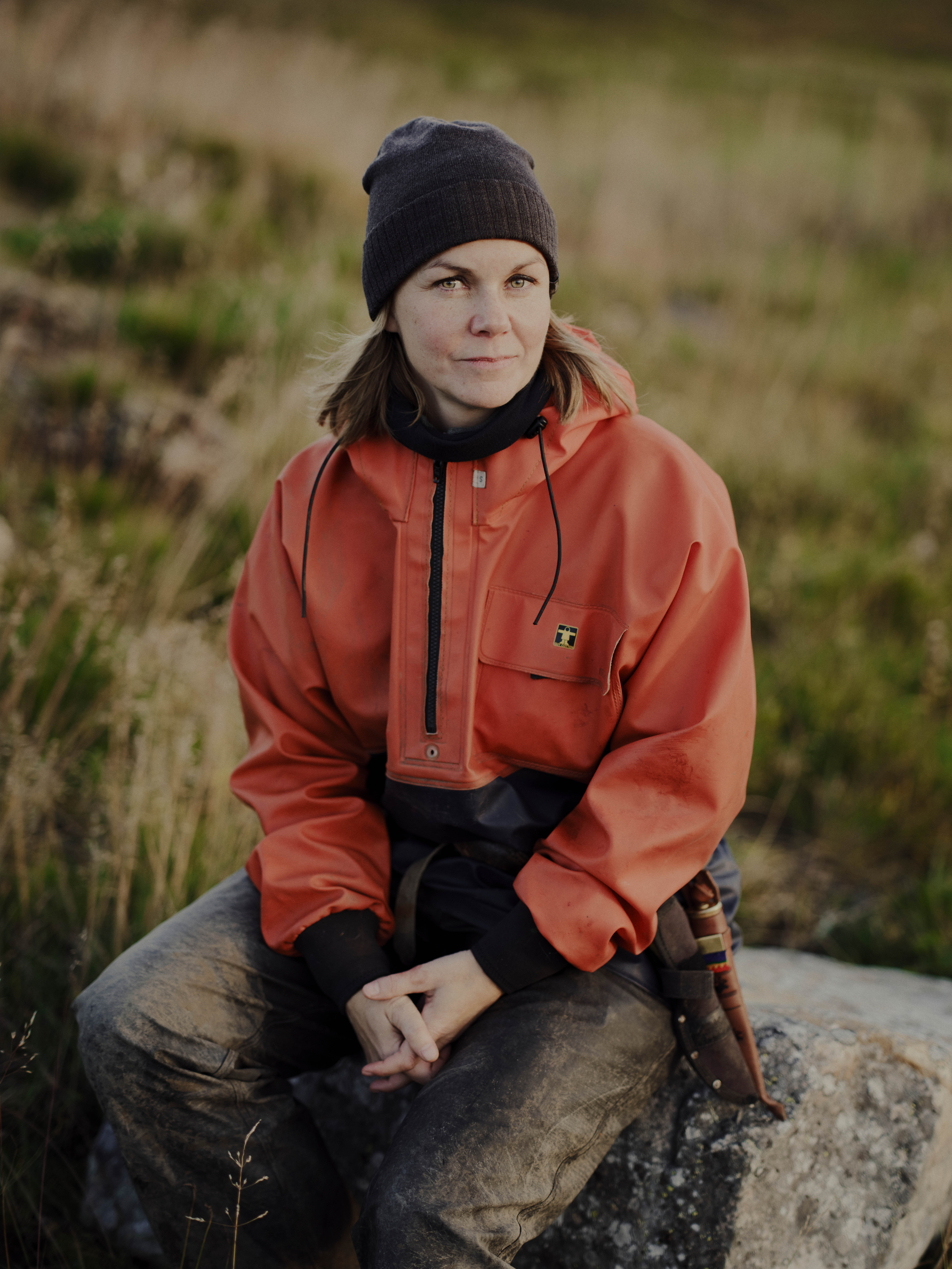Photographs by Nicholas JR White
Above the rhythmic lapping of waves, I listen to kittiwakes quarrel over spoils from a small boat approaching the harbour. Sunlight fading, I pass Hamningberg’s colourful houses. Once a bustling fishing village, it is now somewhere that people summer in comfortable cabins. Hamningberg is the end of Norwegian Scenic Route Varanger, a road that arcs around the peninsula in the northeast of the country, with its rocky coastline and expansive views of sea and sky. Soon the road up to the village will be closed for winter. I emerge from a simple bird hide, with black walls and a wooden bench, stand on salt-sprayed rocks, wind whipping between wires, and look north across the Barents Sea.
It was the birds that drew me to Varanger. The route, punctuated by a series of contemporary hides designed by nature-architect firm Biotope, offers unparalleled access to rich birdlife. Here you can observe seabirds only otherwise found in Siberia or Alaska. But there’s more that I wanted to experience in Varanger, too, whose rich human history begins with the Stone Age. To journey along the scenic route is to travel through layers of natural and cultural heritage, past pre-Christian burial and sacrifice sites of the indigenous Sámi, through old fishing villages, and to Arctic towns, such as Vardø.
The photographer Nicholas White and I land in Kirkenes, a border town moulded by proximity to Russia, and start our drive to the Arctic. At the settlement of Varangerbotn we join the E75, the road that follows the expanse of Varangerfjord for 100 miles. You can drive it in four hours, but over five days we explore this wild, remote place, deserving of slow attention that matches the ancient environment and its history.
It’s a still, soft day, the sky like milk, the water blue-grey marble. We know we are far north because the light is different, thinner. A photographer’s dream, Nicholas jokes, as the low autumn sun drenches the land in colour. Birch forests are a mass of orange-gold, fireweed a brilliant red. The landscape sprawls with a strange vastness. No great hills, no giant mountains, but fingers of rock that reach into the fjord, the unending sky above.

Boatshed in Skallelv, Varanger
Soon we arrive at Nesseby Church, white against the water, and a little further along come to Mortensnes cultural heritage site. We follow paths through the gently sloping scree where we can discern hollows in the earth, rock circles, enclosures and spiralling stone patterns. These are no accidents, but remnants of anchored Neolithic tents, Sámi burial sites thousands of years old and a labyrinth laid 2,000 years before. Perched on a narrow cliff, we stand at this place of ancient life and death. Blood-red berries cover ledges above the fjord’s blue depths.
“You can walk through 10,000 years of history there,” says Jan-Eilif, owner of the Varangertunet guesthouse in the village of Vestre Jakobselv. We arrive cold and damp, but are given a warm welcome by Jan-Eilif and his wife, Siren, our hosts for much of our stay. Locals who have grown up with the fjord and its wildlife, they are generous and proud of their home, and on our first evening we talk long into the night. Jan-Eilif and Siren are not interested in a quick buck, but want to allow others to experience Varanger’s wonders. By day that might be watching gyrfalcons and Arctic hares, or fishing along the banks of the Jakobselv river, alive with salmon. By night, tasting reindeer stew in a Sámi lavvu tent; or simply stepping outside to see the Northern Lights dancing overhead.
As Siren says, while we enjoy her homecooked fish soup: “We want everyone to feel at home and for people to share how we live.” The couple has made Varangertunet a meeting place for locals and visitors alike, somewhere that respects Varanger’s diverse cultures. We spend one evening with Kven craftswomen of Finnish descent, who offer Nicholas a hand-knitted jumper for his birthday. On another morning, we join Jan Øystein Dervo, a Sámi dog sledder in Nesseby, on a training run. In colder, snow-dark months, you can ride across the whiteness, pulled by packs of dogs with ice-blue eyes.
On the cliffs above Ekkerøy, we watch cormorants gather on smooth black rocks below
Well rested, we wake to see sparrows and finches on the feeders and gaze over Varangerfjord’s blue waters. Unlike most Norwegian fjords, it faces east, and its shallow waters, kept ice-free by the Gulf Stream, are rich in fish. This supports an astounding diversity of avian life. Varanger is famous for wintering populations of Steller’s eider and king eider, and visitors come from across the world to marvel at the staggering numbers of birds. Nature-based tourism has steadily evolved, especially since Biotope began designing hides and shelters in 2009. Founder Tormod Amundsen says he “wanted to create a community through architecture, a community of people who care for and respect the nature”.
After breakfast we follow the road north, past the town of Vadsø to the village of Ekkerøy. Waves crash over beaches covered in gulls, waders and ducks. Autumn is not the best birding season, but in spring the cliffs are covered in kittiwakes and in summer the shallow waters are full of ruffs lekking, a display of rival courtship. Ingjerd Tjelle, whose family is from Ekkerøy, set up Ekker Island Arctic Lodge, offering self-catering accommodation for visitors who want to spend days observing spectacular wildlife from large windows. She serves cake and coffee and relates stories about history and nature. Ingjerd speaks warmly of birding guests who are patient and attuned to migrations, who come “back and back for the nature”. She seems pleased when Nicholas and I vow to return.
We walk to the cliffs above Ekkerøy and watch cormorants gathering on smooth black rocks. The wind howls and giant ice-blue waves surge with a slow inevitability, falling like dominoes into whiteness.

Scientist Bror Bonde guides Nicholas and Kat through the Tundra
Next morning dawns bright and clear and, at Skallelv, we take a track that leads to the national park, 700 square miles of tundra, river valleys and boulder fields. It’s a place to hike in summer and ski in winter. We spend a day in this wilderness with scientist Bror Bonde, who shares his knowledge generously. We stand at a river bend, surveying a landscape of seemingly infinite plateaus, an ancient place formed before the last Ice Age. Birch leaves flutter like exquisite insects. A flash of movement above the water. We crouch, silent and still, watching as a mighty sea eagle swoops low along the river.
We are in the wrong season for ruffs and eider, but you cannot command nature nor fit traditional practices into neat, pre-packaged experiences. “It’s impossible to predict these things,” says Kate Utsi, expert bird guide and Sámi reindeer herder. Welcoming of visitors, she is also nervous of commercialising ways of life to attract people who want quick highs. As traditional industries such as small-scale fishing, have declined, tourism – managed correctly – can boost the economy and sustain local communities, such as Skallelv. In the evening, we wander through the village, as receding sunlight coats the village in gold.
The clear weather holds the following day as we drive on to Kiberg. Walking the hills above the village, we explore tunnels and concrete structures built by Germans in the Second World War and, farther along the coast, stop at Domen, a shelter on high cliffs above the fjord. Painted white with pink glass to deter birds, its sharp lines are beautiful, otherworldly even, and we laze on wooden platforms, protected from the wind, warmed by sunlight. All Biotope’s shelters are startlingly simple and don’t overpower the environment. The hides themselves are not the destination, but a viewpoint for the unfolding drama of the landscape. “They should shelter you,” Tormod says, “but not grab your attention.”

Kate Utsi, expert bird guide and Sámi reindeer herder
From Domen we see the lights of Vardø, further north than Reykjavik and further east than Istanbul. To reach it we drive through a tunnel under the icy depths of the sea. Only a few buildings survived when Vardø was destroyed by Russian bombers in 1945. One is Nordpol, northern Norway’s oldest pub, run by Bjørn Bredesen, where we enjoy a pint on a cold evening. Down the road is the refurbished Vardø Hotel with high-end interiors and locally sourced delicacies served by local chef, Tor-Emil Silvertsen.
The last stretch of the road winds between jagged teeth of folded rock and we arrive finally at Hamningberg where waves crash against storm-carved shores and sea eagles perch like monsters. Varanger is a place to experience slowly and with respect for the environment, to observe weather, wait for birds and feel the everchanging light. As I sit in Hamningberg’s hide, I survey the icy sea and listening to kittiwakes crying into the wind.
For more information, go to Visit Norway and Nord Norge
